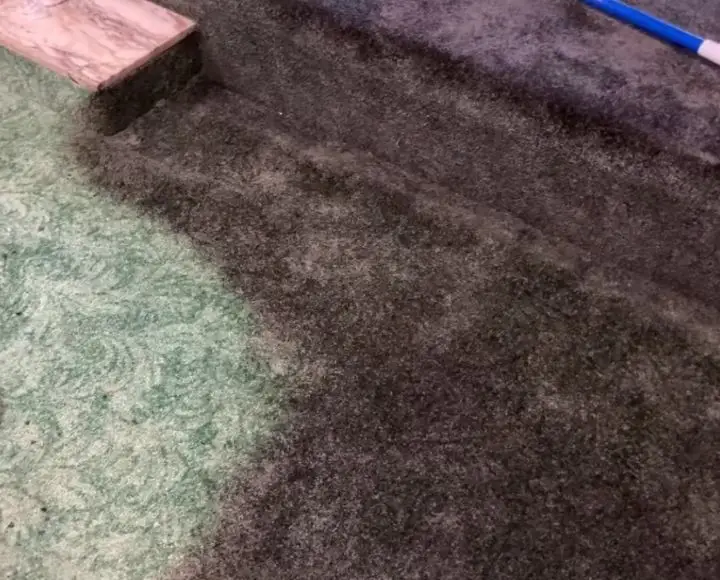Carpeting is a popular choice for homeowners and why not? Think softness, insulation, and aesthetic appeal. Over time, however, carpets can become faded or stained, losing their original charm. Thankfully, dyeing carpet has emerged as a cost-effective solution to revitalize and transform worn-out floor coverings.
But, just how much does it cost to dye carpet? Well, that depends on a number of factors that we will look at in this article. Therefore, you may want to keep it here if you’re considering dyeing your carpet but are unsure about the associated costs.
Understanding Carpet Dyeing
Before delving into the cost considerations, it’s crucial to understand the process of dyeing carpet. The process involves applying specialized dyes to the carpet fibers, which penetrate and permanently alter the color of the carpet. Unlike carpet replacement, dyeing allows you to achieve a new look without the expense and hassle of installing new carpeting.
Factors Influencing Carpet Dyeing Costs
Several factors affect the overall cost of dyeing your carpet. Being aware of these factors will help you determine an accurate budget. They include:
Carpet Size
The size of the carpet is a significant factor in estimating the cost. Larger areas will require more dye and labor, increasing the overall expense. As such, you want to measure the square footage of the carpet to provide a basis for cost estimation.
Carpet Condition
The condition of your carpet will also affect the cost of dyeing. If your carpet is heavily stained or damaged, additional preparatory work may be necessary before the dyeing process, resulting in higher costs. Carpets in good condition may require less preparation and thus be less expensive to dye.
Type of Dye
The type of dye used is another critical factor in cost determination. There are various dye options available, ranging from inexpensive synthetic dyes to more expensive natural and organic dyes. Natural and organic dyes tend to be pricier but offer greater color stability and environmental friendliness.
Complexity of the Design
If you desire intricate patterns or multiple colors, the complexity of the design will impact the overall cost. Elaborate designs require more time and expertise, which can increase the price of the dyeing process.
How Costly Is Carpet Dyeing?
Average Costs of Dyeing a Carpet
As previously mentioned, carpet dyeing costs can vary depending on several factors, including the size of the carpet, its condition, the type of dye used, the complexity of the design, and the service provider. While prices may differ based on location and individual circumstances, here’s a general overview of the cost range for carpet dyeing:
Professional Carpet Dyeing
Professional carpet dyeing services typically charge between $1.50 and $2.50 per square foot. This price range may include the cost of labor, materials, and standard dye colors. Complex designs or specialty dyes may incur additional charges.
DIY Carpet Dyeing
Opting for a do-it-yourself approach can significantly reduce costs. DIY carpet dyeing kits are available in the market, with prices ranging from $30 to $100, depending on the brand and the size of the kit. However, keep in mind that the quality of the results may vary, and it requires careful application to achieve desirable outcomes.
Pre-Dyeing Preparation
Before dyeing, your carpet may require thorough cleaning and preparation, which can add to the overall cost. This step ensures the best possible results by removing dirt, stains, and residues that may interfere with the dyeing process.
Post-Dyeing Treatments
After dyeing, certain treatments like sealing or scotch-guarding may be recommended to protect the newly dyed carpet. These treatments will add to the overall expense but can enhance the longevity and durability of the dye.
Maintenance and Longevity
Proper maintenance and care are essential for preserving the vibrancy of your newly dyed carpet. Regular vacuuming, spot cleaning, and avoiding harsh chemicals can help prolong the lifespan of the dye. Additionally, periodic professional cleaning may be necessary to maintain the carpet’s appearance.
Is Carpet Dye Really Effective?
Yes, carpet dyeing can be an effective and cost-efficient solution for revitalizing and transforming worn-out or faded carpets. When we say effective, here’s what we mean.
Restores Color
Over time, carpets can lose their original vibrancy due to factors like sun exposure, foot traffic, and stains. Carpet dyeing allows you to restore the color of your carpet, giving it a fresh and vibrant appearance. Whether you want to revive the original color or completely change it to a new shade, carpet dyeing can effectively achieve that.
Cost-effective Alternative
Carpet replacement can be a significant investment, involving not only the cost of new carpeting but also the expenses associated with labor, installation, and removal of the old carpet. In comparison, carpet dyeing is a more affordable option, allowing you to save money while still achieving a renewed look for your carpet.
Can an Existing Carpet be dyed?
Yes, an existing carpet can be dyed. In fact, dyeing an existing carpet is a popular alternative to carpet replacement. Carpet dyeing allows you to refresh the color of your carpet and give it a new lease on life without the expense and hassle of installing new carpeting. Whether your carpet has become faded, or stained, or you simply desire a change in color, dyeing can be a viable option.
That said, it is important to note that not all carpets are suitable for dyeing. The type of carpet fibers and the condition of the carpet play a significant role in determining whether dyeing is a viable option. Generally, carpets made from nylon, wool, or natural fibers tend to be more receptive to dyeing. Additionally, the condition of the carpet, including stains, damage, or excessive wear, may require preparatory steps before dyeing.
